Under the Animal Identification Act (Act No. 6 of 2002), all livestock are legally required to be given a registered identification mark – one that must be applied for at the Department of Agriculture, Land Reform and Rural Development. Under this regulatory mandate, all cattle, sheep, goat and pigs need to be marked as part of the Animal ldentification System – a structure that allows lost or stolen animals to be easily identified, and the owner to be quickly determined.
Animal identification also has several benefits for both owner and livestock alike:
- More efficient identification and tracking for improved biosecurity measures
- Proof of ownership
- A preventive measure against stock theft
- In the event of theft, better policing and improved recovery
- Easy identification in the case of any liability or damage caused by an animal to a third party
How to register an animal identification mark
Simply visit https://www.dalrrd.gov.za/vetweb/Animal%20Identification/application%20form.pdf for the complete procedure and forms.
How are animals marked for identification?
The three most common methods of animal identification include:
- Hot iron branding: Burning a mark on the skin of an animal with a hot iron
- Freeze branding: Placing a mark on the skin of an animal by using dry ice and alcohol
- Tattooing: Marking the skin of an animal with tattoo tongs and ink
Hot iron or freeze branding are more commonly used to mark cattle, while tattooing is more often used to mark small livestock such as sheep, goats and pigs. Marks usually consist of no more than three letters or characters, and must be officially registered with the Department of Agriculture, Land Reform and Rural Development.
When should animals be marked for identification?
Should you either purchase animals, or receive them as a gift, they must be marked within two weeks of you taking ownership of them. Similarly, any animals of yours that you sell to a third party must also bear your registered identification mark.
When it comes to swine, all pigs must be tattooed at the age of one month, with the first owner tattooing their mark in the left ear, and subsequent owners tattooing the right ear, left oxter, and right oxter respectively.
Once your identification mark has been officially registered, it will be entered into the National Register of Animal Identification System (AIS), and may not be used or branded on your or any other animals without your permission. Failure to register your identification mark and brand your animals within the legal timeframe will put you in direct contravention of the Animal Identification Act, and could see you incur a fine, or even be imprisoned. As such, registering and marking your animals is vitally important.
Why is animal identification important?
Leaving aside the legal ramifications of not complying with the Animal Identification Act, failure to take the correct identification measures could have serious, far-reaching implications, both in terms of biosecurity and antibiotic residue found in meat samples.
- Biosecurity
Biosecurity refers to the measures that need to be taken in order to prevent the introduction and spread of diseases and pathogens throughout a farm. The more attention that is paid to optimal biosecurity practices, the more a farm will be able to increase its profits, maximise value, and enhance its overall health and safety.
It’s for this reason that animal identification is so crucial when it comes to biosecurity. Being able to identify and trace an animal’s origin is of significant importance in the planning and implementation of disease control and prevention. Not only will this help to reduce any potential health and safety threats, it will have a substantial impact on consumer protection as well.
- Antibiotic residue
While antibiotics are important in the treatment of disease in animals, overuse of antibiotics could lead to antibiotic resistance – which in turn could result in antibiotic residue being found in animal products such as milk, eggs and meat.
Should any antibiotic residue be detected, identifying the animal from which it came is vitally important in preventing the spread of diseases to humans. It’s here where animal identification goes hand in hand with food safety, ensuring speedy detection and tracing of any potentially compromised animals and farms.
How AFSA can help
As a one-stop solution for broad herd health, Mooivet can assist with the various aspects of animal identification marks.
Should you wish to tattoo your swine with your official animal identification mark, you will be able to purchase the correct tattoo pliers and ink at Mooivet, for your convenience.
Additionally, should you need instruction on the correct method of tattooing, simply contact us and arrange for one of our vets to visit your farm for instruction and training.
For more information on animal identification marks, or to have any of your questions answered, simply contact us and we’ll be happy to help. Let’s work together to ensure your herd stays healthy, and easily identifiable.
References:
- https://www.daff.gov.za/vetweb/Animal%20Identification/VPN%20AIDA%20Feb2009
.pdf
2. https://www.gov.za/services/animal-improvement/register-animal-identificati
on-mark
3. https://www.nda.agric.za/docs/legal/legalid.htm
4. https://www.dalrrd.gov.za/Portals/0/InfoPaks/Identification%20of%20animals.
pdf - https://www.farmersweekly.co.za/animals/cattle/why-identify-animals/
- https://pubmed.ncbi.nlm.nih.gov/30710599/
- https://www.intechopen.com/books/veterinary-medicine-and-pharmaceuticals/veterinary-drug-residues-in-meat-and-meat-products-occurrence-detection-and-implications

